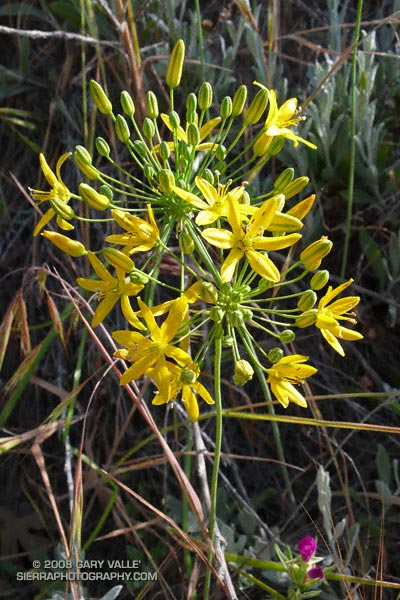
Goldenstar (Bloomeria crocea) — from a run at Upper Las Virgenes Canyon Open Space Preserve, formerly Ahmanson Ranch.

Goldenstar (Bloomeria crocea) — from a run at Upper Las Virgenes Canyon Open Space Preserve, formerly Ahmanson Ranch.
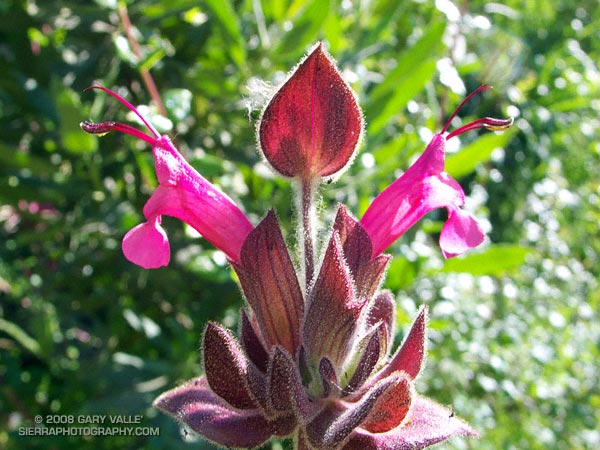
Hummingbird sage (Salvia spathacea) at Sage Ranch Park, near Simi Valley, California. From a run earlier this week.
Google search: $g(symmetry), $g(hummingbird sage)
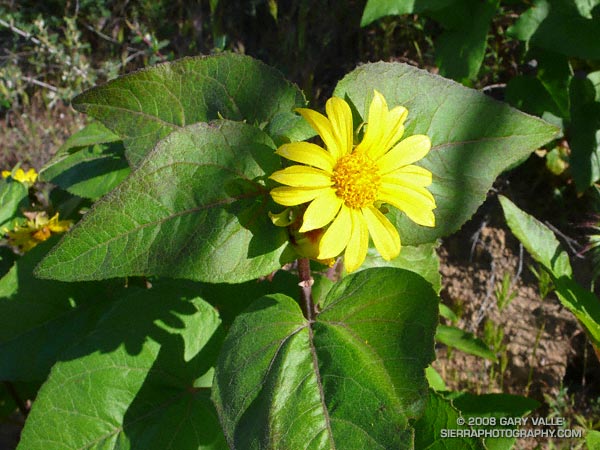
Canyon sunflower (Venegasia carpesioides) tends to grow along cooler sections of chaparral trail. Its rich green leaves and yellow composite flowers are a refreshing sight on a thirsty run.
This canyon sunflower is on a north facing section of the Chumash Trail at an elevation of about 2350 ft. The canyon sunflower population in this area expanded following the 2003 Simi Fire.
On a separate note, it’s that time of year again — at the end of my run this Southern Pacific Rattlesnake was in the street at the Chumash Trailhead on Flanagan Drive in Simi Valley, California.
Related post: Southern Pacific Rattlesnake
Google search: $g(canyon sunflower), $g(rattlesnake), $g(Simi Valley)
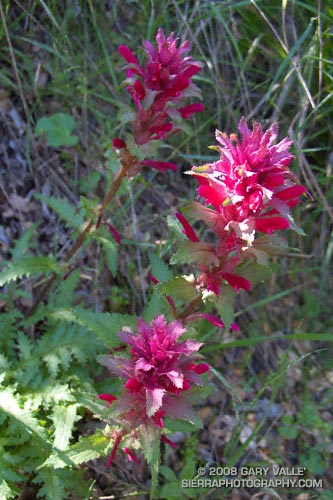
Indian warrior’s varying tones of carmine contrast sharply with its lush green leaves and create a striking combination of colors when seen along a trail. Surprisingly, it is the green of its leaves that is one of its interesting features.
Indian warrior (Pedicularis densiflora) resembles two other wildflowers you might see along a Southern California trail — Indian paintbrush (Castilleja affinis) and Owl’s clover (Castilleja exserta). All three are related root parasites that obtain water and nutrients from their host, but also contain chlorophyll and can photosynthesize carbohydrates.
It seems this characteristic would be of value in a climate where seasonal rainfall is highly variable, extending the parasitic plant’s access to water.
Recent genetic analysis has revealed that Pedicularis and Castilleja are related to plants in the Broomrape family (Orobanchaceae), rather than those in the Figwort family (Scrophulariaceae), in which they have been classified. This was a somewhat unexpected result because one of the distinguishing characteristics of Orobanchaceae had been the lack of chlorophyll.
The photograph was taken on the Backbone Trail on the run described in A Long Run Kind of Day.
Technical References:
The Physiology of Plants Under Stress By Erik T. Nilsen, David M. Orcutt
PLANTS THAT LIKE HOSTS By Toni Corelli
Phylogeny of the parasitic plant family Orobanchaceae inferred from phytochrome A[1]
Jonathan R. Bennett and Sarah Mathews
Google search: $g(parasites), $g(Orobanchaceae), $g(chlorophyll), $g(phylogeny), $g(genetics)
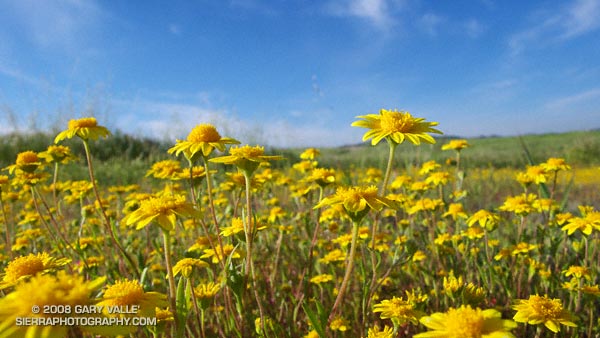
Recumbent view of goldfields (Lasthenia spp.) on Lasky Mesa in Upper Las Virgenes Canyon Open Space Preserve.
Related post: Dealing With Drought
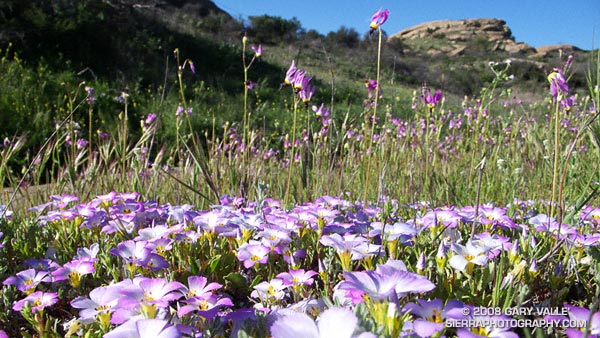
This year’s surprisingly generous rainfall is already producing an explosion of wildflowers in the Simi Hills and Santa Monica Mountains.
These are Padres’ shooting star (Dodecatheon clevelandii ssp. patulum) and ground pink (Linanthus dianthiflorus) at Sage Ranch Park. Both are California natives.
Related post: Shooting Stars